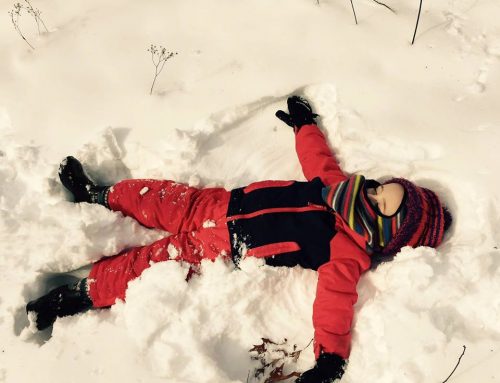Last year, while taking respite from a particularly bustling day, I felt envious watching the musicians who were not actively playing during a performance at the Eastern Connecticut Symphony Orchestra. They were at attention, reverently counting bars, yet somehow also in peaceful repose. Listening, reflecting and respecting the other musician’s work. This struck me as something that we are often missing in our daily lives, and sadly, something that is often missing from the lives of our children. Time to observe, to allow the brain to reflect and learn without activity getting in the way.
Observation is a critical tool in science. As naturalists, observation of sounds, smells, light and seasonal changes help us understand our world. For children, sensory observations help them process large amounts of information from birth to quickly learn about their world. The bitter taste of spinach, the heat from the stove signaling danger, or the explosion of color that fills their senses and sparks curiosity about changing fall leaves. In a Montessori classroom, observation is the cornerstone of the educational method. Montessori teachers are taught to watch the child, observe what they do and what they need to take the next step forward. The teacher should not do it for them, but provide the tools, skills, and practice to help them do it themselves. Perhaps more importantly, is the part of the curriculum that works to teach the child how to observe. Noticing the special shine of a tiny piece of mica imbedded in granite, watching as an older child proudly writes their name, or observing the color choices another child makes with their paint. These are all forms of observation that help children build critical thinking skills.
Observation requires self-control and patience and all of these take practice. There are many times when children can work together, but there are also things that can only be done by one and other children must wait. At the beginning of the year we introduce small rugs for the children to roll out on the floor when they are working. Putting their activity on a rug signals that they are working and would like their work to be respected. The process is slow and methodical. We practice rolling out the rug and rolling it back up. We talk about how the rug lets other children know, “This is my work, please don’t touch”. We practice walking slowing and carefully around a rug that’s on the floor, never over, never on. We learn how to say “May I join you?” and we learn that we can say “Yes” or “No, I would like to work on my own”.
Most importantly, we learn that if someone is working on something that we really want, we can observe them quietly until it is ready for the next person to use. When it’s our turn we can work with it as long as we like. The self-control needed to wait and delay gratification can be incredibly hard for young children. But they can also learn to take joy and inspiration in watching a friend succeed at something challenging or create something beautiful.
Last month Nature Center staff attended a lecture given by Dr. Jane Goodall. She shared a story from her childhood. She was curious to know how a chicken laid an egg. One morning, determined to find out, she snuck out and sat quietly in the chicken coop for hours until a chicken produced an egg. Satisfied with her new knowledge she trotted off back to her parents who had been frantically looking for her. She was four years old.
We can’t assume that children don’t have the self-control or patience to listen, to watch or to observe. Their inherent curiosity makes them perfect observers, they just need to be given the opportunity to practice. Observation is a form of respect for the talent of others and the wonder that may unfold if we are just patient enough to not interfere. It is the understanding that the chicken will reveal it’s secret if we wait respectfully and observe.





